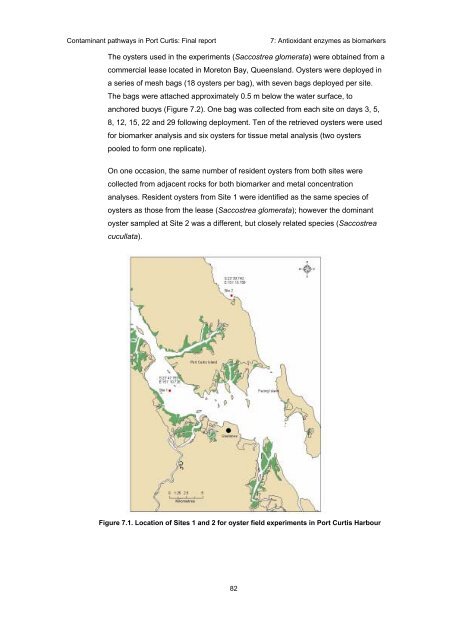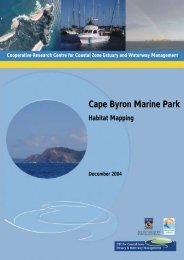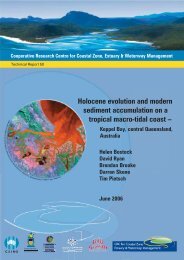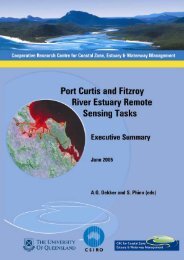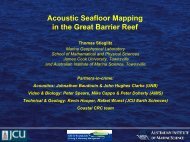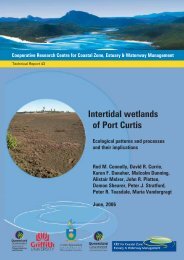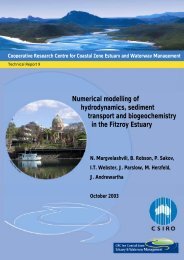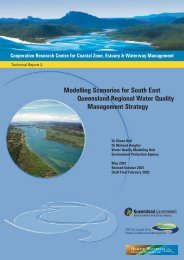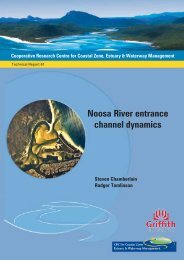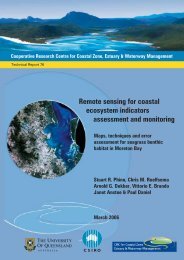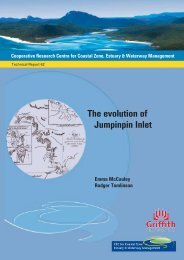Contaminant pathways in Port Curtis: Final report - OzCoasts
Contaminant pathways in Port Curtis: Final report - OzCoasts
Contaminant pathways in Port Curtis: Final report - OzCoasts
You also want an ePaper? Increase the reach of your titles
YUMPU automatically turns print PDFs into web optimized ePapers that Google loves.
<strong>Contam<strong>in</strong>ant</strong> <strong>pathways</strong> <strong>in</strong> <strong>Port</strong> <strong>Curtis</strong>: F<strong>in</strong>al <strong>report</strong>7: Antioxidant enzymes as biomarkersThe oysters used <strong>in</strong> the experiments (Saccostrea glomerata) were obta<strong>in</strong>ed from acommercial lease located <strong>in</strong> Moreton Bay, Queensland. Oysters were deployed <strong>in</strong>a series of mesh bags (18 oysters per bag), with seven bags deployed per site.The bags were attached approximately 0.5 m below the water surface, toanchored buoys (Figure 7.2). One bag was collected from each site on days 3, 5,8, 12, 15, 22 and 29 follow<strong>in</strong>g deployment. Ten of the retrieved oysters were usedfor biomarker analysis and six oysters for tissue metal analysis (two oysterspooled to form one replicate).On one occasion, the same number of resident oysters from both sites werecollected from adjacent rocks for both biomarker and metal concentrationanalyses. Resident oysters from Site 1 were identified as the same species ofoysters as those from the lease (Saccostrea glomerata); however the dom<strong>in</strong>antoyster sampled at Site 2 was a different, but closely related species (Saccostreacucullata).KilometresFigure 7.1. Location of Sites 1 and 2 for oyster field experiments <strong>in</strong> <strong>Port</strong> <strong>Curtis</strong> Harbour82


